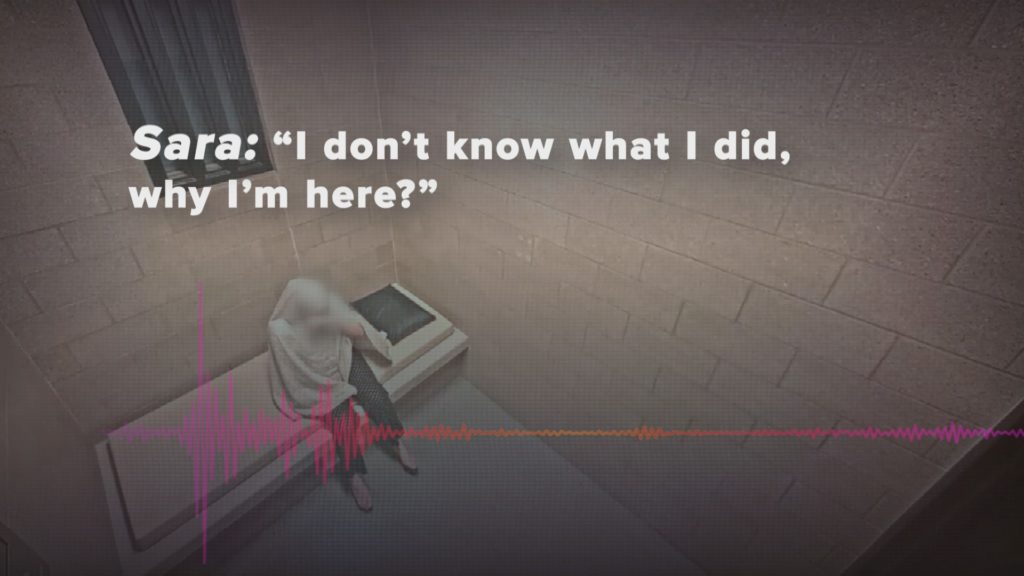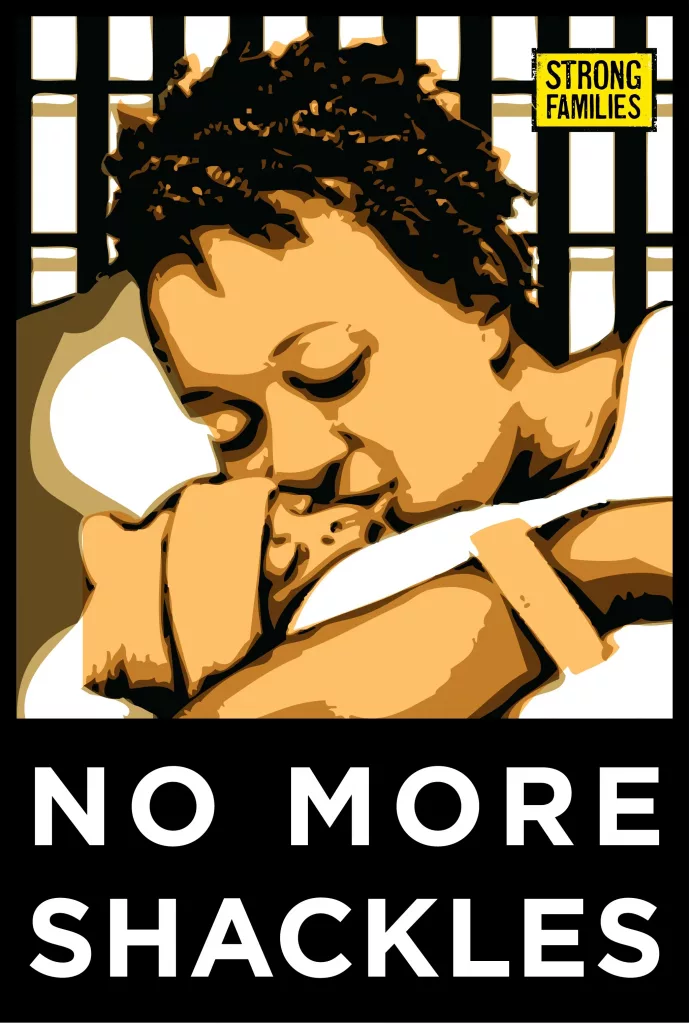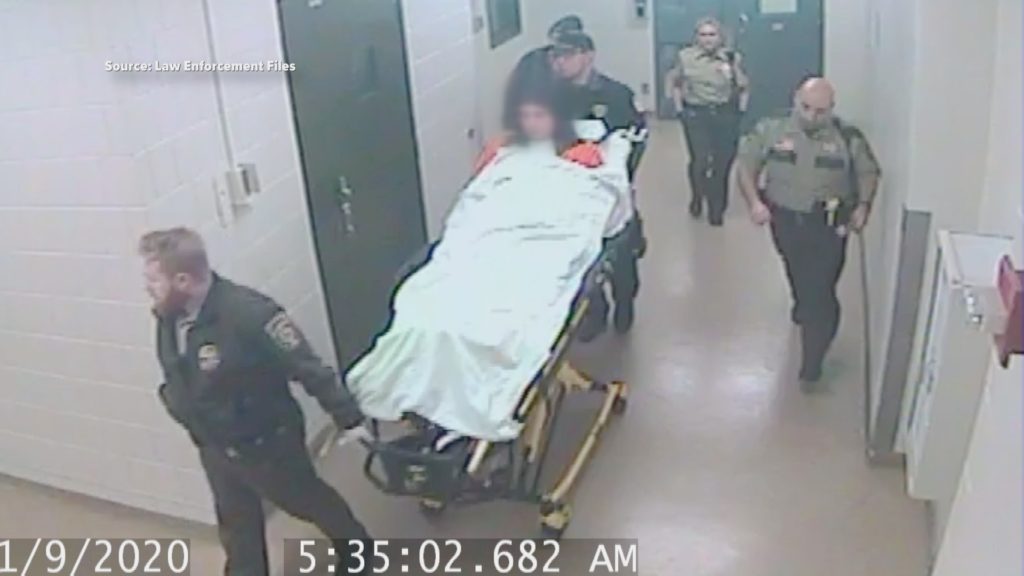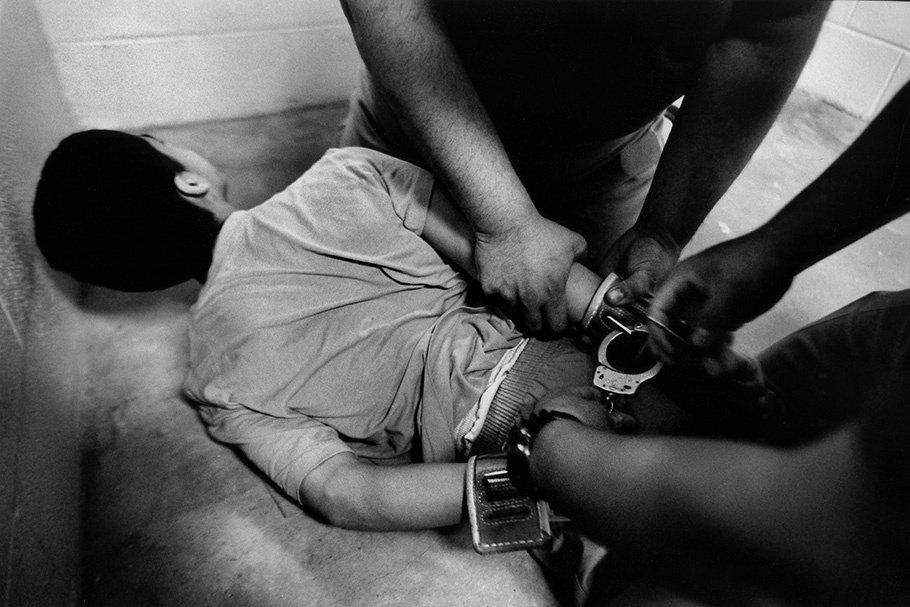
Dayton, Minnesota, the night of January 7, 2020, Faris and Sara Hussein were at home, chilling. Faris was playing video games. He had his headphones on. Sara Hussein was in the kitchen, cooking. Sara was nine months pregnant, expecting their first child in two weeks or so. There was a knock at the door. Faris, playing video, didn’t hear it. Sara, busy in the kitchen, didn’t hear it. Then a boot kicked in the door, armed men rushed in, armed men in plain clothes grabbed Faris, grabbed Sara and threw her to the floor. Home invasion? Yes, by police. Maple Grove police were looking for … a stolen snowblower. Yes, a snowblower. Shackled, Sara and Faris Hussein were taken to the Hennepin County Jail. Although Sara was never charged with anything, she was kept in shackles, even when she went into labor. According to her, she was kept in shackles while in labor for five hours. A few hours after finally being released, Sara Hussein delivered her and Faris’ first child. Sara Hussein has since sued Hennepin County: “The lawsuit she filed against the county said shackling her was `brutal, sadistic, and unconscionable.’” This week, three years later, Hennepin County settled the suit for $500,000.
Everything about that night was wrong. In Minnesota, by state law, shackling pregnant people is illegal. Sara Hussein was shackled in labor for five hours, in plain sight. Sara Hussein, nine months pregnant, was shackled from beginning to end, again in plain sight. No one objected. No member of any so-called law enforcement agency reminded anyone that shackling a pregnant woman is illegal. Minnesota passed a law banning the shackling of pregnant women in 2014. This all happened in January 2020, six years later. Finally, Hennepin County Jail is the largest jail in Minnesota. None of this is out of ordinary. Illegal, yes. Cruel, decidedly. Unusual, sadly no. Minnesota law requires any shackling of pregnant women must be reported to the legislature within three days. Sara Hussein’s case was never reported. Nor were a number of other cases. Again, illegal, yes. Cruel, decidedly. Unusual, no.
Kare 11, a local Minneapolis – St. Paul news station, first covered this story and has done so, pretty much exclusively ever since. Their reporting has been thorough and reliable. However, from beginning to end, Kare 11 has insisted on the significance of Sara Hussein’s innocence. Their first account’s headline read: “Jailed, innocent, in labor – and shackled”. This week’s report’s headline read: “Bungled raid led to innocent pregnant woman’s shackling”. Shackling Sara Hussein was brutal, sadistic and unconscionable, and illegal, not because she was innocent, but because she was pregnant and then in labor. Her presumed innocence or guilt is irrelevant. Again, shackling pregnant people, shackling people in labor, is brutal, sadistic, unconscionable, and it should be illegal everywhere. Stop shackling pregnant people. What will it take to stop shackling pregnant women?

(By Dan Moshenberg)
(Image Credit: Radical Doula) (Photo Credit: Kare 11)






